Petrified is an incredibly unique geological formation that occurs naturally in nature. As a matter of fact, nature works twice to provide these beauties: first by growing the trees and then by turning the tree into stone. Over the last couple of years, I’ve been asked quite a few questions about the different types of Petrified Wood, how to identify, how to value, and where can rockhounds collect higher-quality varieties.
If you need specific answers to your questions then follow the links on the page. They will guide you to the correct page and hopefully answer all of your questions when it comes to Petrified Wood.
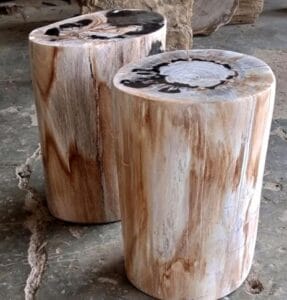
What Is The Rarest Form of Petrified Wood?
Currently, the rarest form of Petrified Wood includes green specimens. While Petrified Wood occurs naturally in a variety of colors, green Petrified Wood is considered to be the rarest on a worldwide scale. If you want to get specific then Gary Green Petrified Wood is the most sought-after.
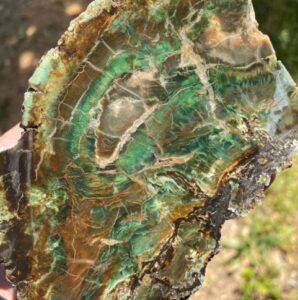
How Do You Know If Petrified Wood Is Valuable?
It’s a bit easier to find out how much Petrified Wood is worth than it can be to determine the exact age. Either way, both things are possible.
Petrified Wood’s crystal composition can strongly indicate the value of a specimen. However, several other factors primarily based on a specimen’s aesthetic appeal can impact its value. These factors include the specimen’s size, how it was polished, and the ring designs from the tree.
Other factors that can impact the resale value of Petrified Wood include the wholeness or completeness of the specimen, where the Wood was found, ringlets, coloration, size, and whether it’s been professionally polished.
Small pieces of Petrified Wood make excellent tourist souvenirs. However, they are usually only sold for a few bucks. That said, large, complete pieces of Petrified Wood sell for much more. Whole, large specimens can be sold by the pound, bringing in between $3 to $10 per pound with the end value being determined by the overall quality of the piece.
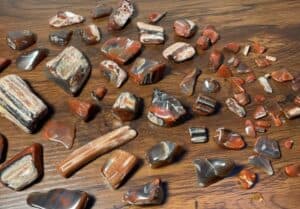
What Are The Different Types of Petrified Wood?
Like the countless precious gemstones, there are various types of Petrified Wood. Also similar to gemstones, the colors of Petrified Wood are caused by different minerals. You can find different types of wood based on location and wood types, with most being color-based.
The more you know about the types of wood there are, the easier it is to identify Petrified Wood.
While most Petrified Wood is one or two colors, specimens from Arizona contain many colors within an individual specimen. The various colors are caused by different oxidation states of Iron, the dominant colored element for Petrified Wood found throughout the state.
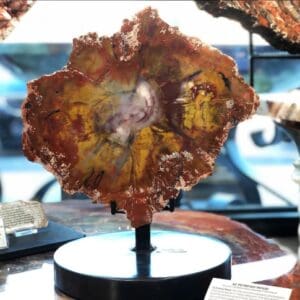
Red Petrified Wood
The pink and red colors of Petrified Wood are produced by Hematite, a form of oxidized Iron. The intensity of these hues depends on the amount of Hematite present.
While Red Petrified Wood isn’t necessarily rare, large pieces with intense and bold colors tend to bring in premium prices when it’s used for furniture. Red Petrified Wood isn’t so rare partly because Iron is a common mineral in many locations, meaning this colored wood is easier to find and more readily available. There is also the fact that some Petrified Wood specimens are already naturally red, like Redwood and Cedar trees.
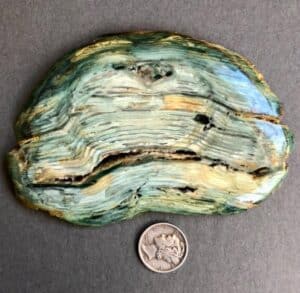
Green Petrified Wood
Arizona’s Green Petrified Wood is rare. It is among the most popular types of Petrified Wood available worldwide. This variety comes from a tree that fell in Winslow, Arizona, an area reflecting the presence of 2% or more Chromium in the specimens.
The specimens found in this region originate from the Chinle Formation, making the samples over 200 million years old. This green Petrified Wood was once a living conifer tree called Araucarioxylon Arizonicum. Sadly, this tree species is now extinct, adding to the rarity of the Petrified Wood.
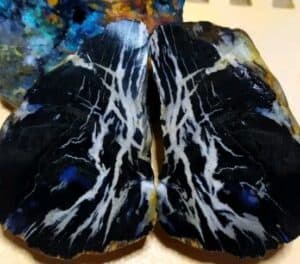
Black Petrified Wood
While black Petrified Wood isn’t rare, since black hues and tones are common, it is relatively rare to find an entirely black specimen. Various types of black Petrified Wood include Jet, Black-and-White, Black Crystalized, and Black Opal wood.
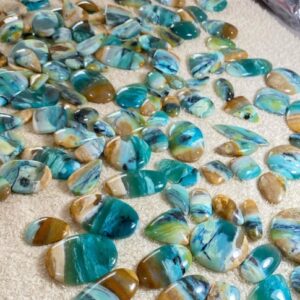
Opalized Petrified Wood
Wood Opal or Opalized Wood has an opalescent sheen and is often used as a gemstone. Many of the specimens found contain some Opal. Still, in rare instances, an entire piece of Wood can have it, making it rare and significantly bringing the value up.
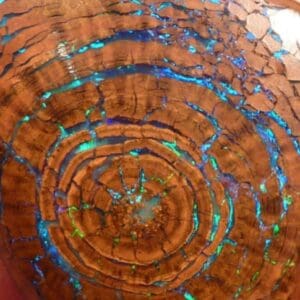
How Can You Tell How Old Petrified Wood Is?
Believe it or not, there are a few ways to determine how old Petrified Wood is. However, this may be easier for scientists than for others. Let’s dig in.
Relative Dating: This process is done by determining the age of the sedimentary rocks a fossil is buried in. Accurately dating Petrified Wood using this method requires good knowledge of the area’s geology where the fossils are found.
Radiometric Dating: Such a process includes calculating the percentages of radioactive elements.
Biostratigraphy: This process requires dating the age of other known organisms fossilized within the same layer as the Petrified Wood.
Aside from these processes, we can tell you that Petrified Wood is millions of years old. However, in the right conditions, some can start to mineralize and begin the petrification process in less than ten years.
A Science Dierect article explains how fresh samples of Wood had fallen into a hot spring and quickly became petrified. These findings led to an experiment involving fresh Alder wood. The wood was placed in the hot spring’s water stream, and some wood fragments were silicified to nearly 40% by weight within seven years.
- Identify Enstatite - March 12, 2024
- Identify Cerussite - March 3, 2024
- Identify Bytownite - February 18, 2024
